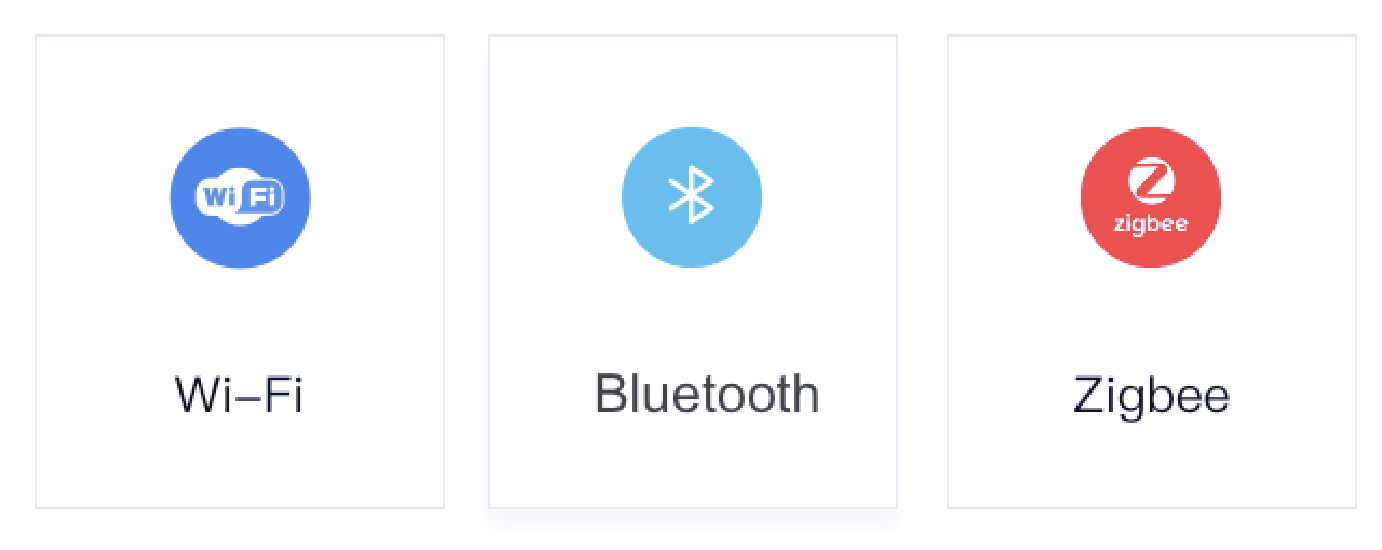The Internet of Things has created entirely new ways of living, connecting, and working. With the Internet of Things has also come new technology that makes using IoT-based systems and devices faster, easier, and smoother. Of course, a key aspect of IoT systems is HOW the devices communicate with each other and with the cloud: that is, their connection protocol.
Wi-Fi has been the standard connectivity protocol for years now, but two relatively new arrivals—Bluetooth mesh and Zigbee—are threatening to dethrone Wi-Fi by addressing some of Wi-Fi’s disadvantages.
Here’s a quick comparison of the three most popular IoT connectivity protocols—Bluetooth mesh, Zigbee, and Wi-Fi—going one by one and starting with the new arrivals.
Zigbee
Zigbee, if you don’t already know, is a wireless technology designed to carry small amounts of data over short distances. As such, Zigbee was created for small, low-cost and low-power IoT systems, such as those used in the average home.
Zigbee is based on the IEEE 802.15.4 technical standard, which defines the operation of low-rate wireless personal area networks (LR-WPANs). Unlike Wi-Fi, Zigbee uses a mesh network, meaning that every node in a network is connected, which means you don’t have to rely only on the router and endpoint.
Zigbee is reliable, easy to install, and doesn’t use much power, meaning your battery will last you a lot longer.
However, Zigbee also has certain disadvantages. For one, it only works for short-range connectivity, so the devices you’re using can’t be too far from each other. It also has a low transmission rate, and it’s also not as secure as a Wi-Fi-based system.
Bluetooth Mesh
Bluetooth mesh is a computer mesh network standard based on Bluetooth Low Energy, a wireless personal area network technology designed to provide low-cost and low energy consumption connectivity for novel applications in the healthcare, entertainment, fitness, and security sectors.
Bluetooth mesh uses what’s known as a flood network to relay messages. In a flood network, every message sent out by every device is then relayed through every other device enabled to relay messages and sent to all the other devices in their range. While this has obvious communication advantages, it’s not necessarily the most efficient routing method, as every single message also has to traverse the entire device communication network.
Bluetooth mesh is ideal for industrial IoT use cases—especially lighting—that require the relatively low-cost and low-power scalability, reliability, and performance of Bluetooth technology. It enables many-to-many device communications and is optimized for creating large-scale device networks.
However, there are disadvantages to Bluetooth mesh that have to do with the disadvantages of mesh networks in general:
・They are more expensive to implement.
・Their topologies are more complicated and difficult to build and maintain.
・They have a higher chance of redundant connections, which adds to the costs and potential for reduced efficiency.
Wi-Fi
Finally, we come to the old standby: Wi-Fi.
Wi-Fi, sometimes written as WiFi, Wifi, or wifi, is a family of wireless technologies based on IEEE 802.15.4. With Wi-Fi, a local area network (LAN) is used to provide internet access within a certain limited range. The most common type of network protocol in the home and in public spaces like coffee shops and airports, WiFi uses one central hub that makes it easy to add or remove devices without affecting the rest of the network.
Wi-Fi’s bandwidth is high—up to 2MHz, making it perfect for extremely common daily activities like streaming music or checking email on a phone or tablet.
The disadvantages of Wi-Fi are that:
1. It only works well for short ranges. If your devices are too far apart you will have to use an extender, which will likely affect latency and connection speed.
2. It’s not very power-efficient. WiFi-based devices usually last about 10 hours.
 Protocols
Protocols
So Which is Better? Zigbee, Bluetooth, or Wi-Fi?
You probably know what’s coming:
It depends.
What are your particular IoT needs? How big is your house? How far away are your devices? What kind of speed and reliability do you require? What is your budget?
For the home, what Wi-Fi gives you in bandwidth you lose in battery power and range, and what you gain in range and battery life with Zibgee you lose in bandwidth. So, if your devices and endpoints are running on batteries, Zigbee is probably the better choice. On the other hand, if you have a larger IoT-based system or network that you are using for beyond-the-home infrastructures, then you should definitely consider Bluetooth mesh.
Whichever your choice, your IoT ecosystem should be one that can offer all three and also link your devices to reliable cloud network. Tuya can do exactly that. Read more about Tuya’s capabilities here: https://en.tuya.com/solutions.





